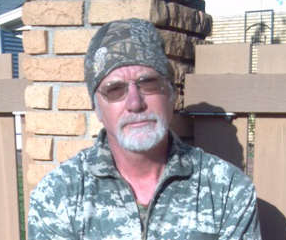
By STEVE GILLILAND
Explore Kansas Outdoors
A few years back at the Outdoor Writers of Kansas spring outing at Beloit, Joyce and I were paired with Chatt Martin for a half-day’s crappie fishing on Waconda Lake, just outside Glen Elder.
Since retiring, Chatt has turned his passion for crappie fishing into a full-time crappie fishing guide service called Crappie Time Fishing.
Glen Elder is usually hot for crappies this time of year and we were hearing stories of fantastic “slab” crappies being caught. When Chatt and I made the final arrangements for that Tuesday morning, his only question for me was “Has Joyce ever fished with long rods?”
Long rods, indeed. As we pulled into the boat ramp parking lot the next morning, there was no doubt which boat was awaiting us, as ten-foot fishing rods towered above the center console of his boat. We loaded up and headed across the lake to the first of several spots that had been giving up nice crappies.
Our guide's favorite honey hole was along the causeway, a huge, high rock-laden embankment with a road atop it, that encloses the western end of the lake, but because the wind was forecast to be nasty early on, we tried other spots. It seems everyone else felt the same, and our first stop, a cove cut far back into the bluffs along the southern shore, already sported several boats. No one was catching much, but a scan of the cove with Chatt's high-dollar Lowrance fish finder showed some fish out front toward the opening.
After an hour of trying most things known to man and only catching two fish, Chatt decided it was time to fight the wind in necessary and we headed across the lake to his hot spot along the causeway.
We slowly motored alongside a long stretch of dead, beaver-chewed saplings and brush that ran for several hundred yards along the edge of the causeway.
Chatt positioned the boat and told us we were about to learn the art of “doodlesocking.”
Doodlesocking is an age-old, tried and true method created by bass fishermen years or possible generations ago for fishing in and around snags of any kind. It involves the use of a very long, stout pole with a bait or jig fastened to the end of a short length of heavy line. The idea is to dip or “doodle” the bait slowly into the water in and around tree limbs, etc., then wait for a fish to “sock” it.
It works well because you’re fishing the bait straight up and down into pockets around weeds, lily pads, brush and stumps, instead of casting into them and trying to drag the bait through by reeling, which almost always results in getting snagged.
Chatt rigged his extra-long rods with jig heads of various colors and tipped them each with a live minnow that hung from two feet of line. The water was only a couple feet deep and the brush stretched ten to fifteen feet out from the base of the rocks. The three of us spaced ourselves along the same side of the boat and began dipping the jigs in amongst the brush as the electric trolling motor pulled us slowly along parallel to the shore.
The crappies were just beginning to come up into shallow water to spawn, and in the first several yards, Chatt and I landed three nice ones. The day before, Joyce had cleaned our clocks catching walleye, but that day she had not yet caught a fish. Suddenly, she hauled upward on her rod which bent double toward the water as she hoisted a fat, feisty crappie into the boat.
Because of the wind and weather change the night before, we didn’t catch many crappies, but the ones we caught were in great condition.
What I find ironic about the day was that we fished from a boat sporting fish-locator electronics costing as much as my pickup, with rods and reels each worth a couple days' wages and yet we caught our fish using an age-old technique called doodlesocking that has been round since fishing poles were sticks and string. But hey, to me and to a fishing guide, it’s called doin’ whatever works!
Continue to Explore Kansas Outdoors.
Steve can be contacted by email at [email protected].






